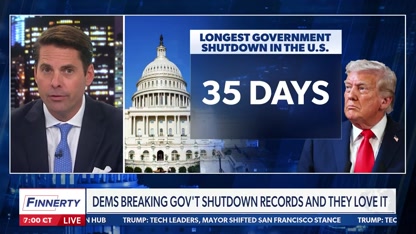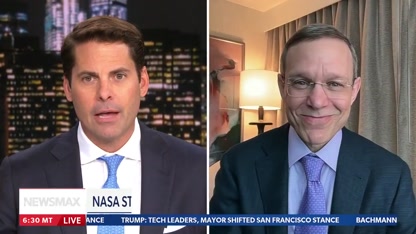
spectator.org
How Trump 45 Paved the Way for 47
Editor’s Note: Beloved American Spectator contributing editor Dov Fischer died on September 29, 2025. This is the essay he wrote for the American Spectator’s fall print magazine.
By now, the Biden–Harris years cannot be prevented, only undone. Even so, the scandalous hyphenating of the Trump presidency into two terms, separated by a quadrennium, now appears to have been a critical component of what has made the first year of President Donald Trump’s second term so extraordinarily consequential. Instead of wallowing after 2020, the president and his closest advisers leveraged the four-year interregnum to look back on lessons learned and plan for the second round with extraordinary acumen and perspicacity.
Subscribe to The American Spectator to receive our fall 2025 print magazine.
There can be no denying that Trump 45 was subjected to a viciously unscrupulous and unprecedented frontal assault. His hapless opponent, unable to internalize that the American people had rejected her yet again, as they had when she lost the 2008 Democrat primary to Barack Obama, set about to destroy Trump after his incontrovertible election with a fabricated patchwork of lies alleging that Vladimir Putin had conspired with Trump to hand him the presidency. It was an absurd premise, built on the notion that Putin would have preferred opposing Trump for four years to contending with the Hillary of Benghazi infamy. By now, we all know the story and the names of the plotters and conspirators: the secret money, the Steele Dossier, Operation Crossfire Hurricane, Perkins Coie, Andrew McCabe, Peter Strzok, Lisa Page, James Comey, Robert Mueller, the FISA Warrant, the Mueller Report, Rod Rosenstein, James Clapper, John Brennan — a whole slew of filth from the deepest depths of The Swamp. And behind so much of it was Obama himself.
Trump 45 was subjected to a viciously unscrupulous and unprecedented frontal assault.
They all were politically gunning for him, even before Trump 45 arrived in D.C. Television networks had audio of casual talk Trump had exchanged with a news correspondent off-camera in a trailer about women. A myth circulated virally that he is Hitler-like, fascistic, and inferentially racist and antisemitic. The press corps, led by a remarkably brazen CNN provocateur, Jim Acosta, treated the president of the United States with manifest contempt.
Trump 45 indisputably had won the 2016 electoral vote but not the popular vote. By strategy, he focused on campaigning for electoral votes in the Midwest — the Democrats’ so-called “Blue Wall” — while his opponent foolishly squandered excessive time and money running up her popular votes in California and New York. Yet, by Trump’s winning “only” in electoral votes and not popular votes, a Democrat–media canard arose that “Trump did not really win the election.”
Subscribe to The American Spectator to receive our latest print magazine.
This time, Trump aimed at decisively capturing the popular vote, too, leaving no room to question the legitimacy and scope of his blowout win. That enabled him to enter the White House this time with greater authority and legitimacy. The voters had seen him impeached twice, investigated for “Russian collusion” by Robert Mueller, investigated by the Nancy Pelosi–Liz Cheney January 6 Committee, subjected to a year and more of Democrat lawfare from Jack Smith in Washington, D.C., and Miami, Florida; Fani Willis and Nathan Wade in Atlanta, Georgia; and Letitia James and Alvin Bragg in New York City. Trump had been subjected to Michael Cohen and Stormy Daniels, a half-billion-dollar illegal fine and thirty-four “felony convictions,” and so much more. Yet, after all that, opposed by a Kamala Harris campaign that spent more than $1.5 billion — buying celebrity endorsements at $1 million a pop — Americans elected Donald J. Trump to be their 47th president.
To gain more legitimacy, Trump 45 had played it “safe” and opted to designate a Cabinet and inside team of “highly qualified experienced professionals,” Republicans with long years of party credentials and revered titles. Senator Jeff Sessions for attorney general. Elaine Chao (Mitch McConnell’s wife) as secretary of transportation. Other well-regarded names: Four-star General John Kelly as chief of staff. James “Mad Dog” Mattis for defense secretary. Rex Tillerson, CEO of ExxonMobil, for secretary of state.
From the outset, Trump proceeded to check off the boxes at a blazing pace: the Keystone XL pipeline, Dakota pipeline, building the wall, cutting off money to “sanctuary cities,” deporting illegals who had committed crimes, restricting immigration from terror-laden countries, freezing nonmilitary government hiring, laying a groundwork for assuring the integrity of voter registration rolls, withdrawing from the Obama–Kerry multilateral Trans-Pacific Partnership, saving jobs at Carrier, GM, Ford, and Boeing, ordering a hiring freeze in the executive branch, ordering a moratorium on new federal regulations, ordering the Commerce Department to formulate “Made in America” rules for all steel used on pipeline construction, ordering an end to aid to any international agency that promotes or provides abortion services, and so much more.
The Deep State, initially knocked off balance, regrouped and worked to sabotage his programs and destroy him personally. Although Trump knowingly had promised to “Drain the Swamp,” he soon discovered that its depth sank deeper than expected. Democrats started running to Obama judges and Clinton judges; scouring the Ninth Circuit in cities like Los Angeles, San Francisco, Seattle, and Portland; and amassing nationwide injunctions stopping almost every Trump initiative. They kept spreading lies and falsehoods about him through their media accomplices and cooking up scandals — anything. In time, they found themselves a Michael Cohen, a Stormy Daniels, and a Michael Avenatti. Any cartoon character they could find to divert Trump from his agenda would do.
They attacked his mental acuity and threatened to invoke the 25th Amendment, something they never would replicate in four years under a doddering Joe Biden. They accused him of abusing the presidency simply to accumulate personal wealth, an accusation they never hurled at Biden or his son when Hunter Biden started collecting $50,000 monthly from a Ukrainian oil and energy company, Burisma, or when Hunter started selling his “paintings.” And then, once the Democrats gained the House majority, came the annual impeachments. They knew their two impeachments — both thrown out by the Senate — would never gain the necessary votes for conviction, but they pursued them as part of their effort to tie him up, obstruct his agenda, and shred his reputation.
There is no way for future historians fully to grasp how remarkably successful Trump 47’s first year has been without also regarding what his would-be destroyers taught Trump 45.
He and his team had four years to reflect “in the wilderness,” empowering Trump 47 to begin with many advantages he had seeded for himself the first time. For example, Trump 45 executive orders had been stymied regularly by Obama or Clinton judges’ nationwide injunctions and would linger in the queue as they wound their way up to the Supreme Court. But they did get there eventually, and the Court frequently reversed the Democrat district judges and appellate panels that initially had obstructed him. Consequently, Trump 47 entered office with a slew of legal obstacles already set aside. Therefore, as soon as the money would be allocated by Congress, the “big beautiful wall” could be completed. Illegal aliens could be deported so much more rapidly. ICE could function at once, with the benefit of four years that were devoted to mapping out new strategies to overcome “sanctuary” cities and states.
That popular vote validation he received this time gives him room to bring in his loyalists. He is no longer restricted to “respectable” people with “impressive lifetime resumes” and “impeccable credentials.” This time, he has loyalists upon whom he can rely when the going gets tough. Pam Bondi, in Justice, is more scrappy than the elegantly dignified Jeff Sessions and seasoned Bill Barr, but scrappy he needed. Pete Hegseth, in the newly named Department of War, is a tough guy whom the media united to destroy over his sketchy past, but whom Trump believed had matured from mistakes and who shares Trump’s “warrior culture.” There’s also Marco Rubio in State, and more. Trump 47 learned from Trump 45 that he is no impostor, knows the job well, can execute the job splendidly, and will best succeed by ignoring the well-meaning Republican “practical” people whose advice historically has contributed to the mess. This time, for instance, he put a Kash Patel at the FBI instead of a Christopher Wray, who was “experienced from the inside.” He also has a Tom Homan and a Kristi Noem — and she can ride a horse at the border. Just a solid team of loyalists who were prepared and ready to make history from day one with an agenda learned from four years of Trump 45 experience.
Trump 47 learned from Trump 45 that he is no impostor.
Trump has learned to handle press meetings differently. There is no more abuse. The troublemakers and disrupters have been thrown out. There are no special privileges for “legacy media” if they misbehave. In this, he was helped by fortuitous timing. CNN’s ratings collapsed, humbling their brazen behavior at pressers. MSNBC’s did as well. Major hecklers have been terminated or otherwise neutralized from the networks’ insides and by their own missteps: Don Lemon, Brian Stelter, Acosta, Joy Reid, and others. George Stephanopoulos stepped into a mess of his own making. CBS’s 60 Minutes, too. They all have paid heavily, upending the balance of power in the press room.
When 45 recognized Jerusalem as the capital of Israel and moved America’s embassy there from Tel Aviv, all the “experts” warned him he was igniting a regional war, possibly even World War III. However, he followed his instincts, and there was no actualized pushback. That confirmed for Trump 47 that he has remarkable instincts. If he believes tariffs will not set off runaway inflation, then he need not fear “common wisdom” and doing what seems obvious to him after he has consulted with his loyalist advisers. Sure enough, the tariffs have not generated runaway inflation and an international trade war after all, but have massively increased government receipts. He laser-beamed toward the radical woke universities that exposed themselves as hotbeds of anti-Americanism, DEI immorality, and Jew-hate, and he struck at their vulnerable pocketbooks and their foreign student cash cows. He attacked immediately so that he would have time to fight them through the courts and repair the campus problem within his four years.
In tandem, Trump 47 learned from Trump 45 that anything new he would launch would be blocked again by the network of Obama and, now, Biden judges. So, instead of proceeding at a measured pace, Trump 47 issued as many executive orders and ignited as many battles as he could because they all would be halted soon enough by the Obama and Biden judges, and a frustrating pause would ensue while each appeal would wind its way through the appellate circuits up to the Supreme Court. But he now knew from hands-on experience that, despite the way left-wing media would report, a steady stream of lower-court reversals and obnoxious judicial tongue-lashings and threats of contempt ultimately would augur and prove nothing. While the New York Times and Washington Post gleefully would be calling him a tyrant being reined in by the courts, he now knew from Trump 45’s experience that his perfectly legal executive orders ultimately would be upheld by the Supreme Court. The sooner he would issue them, the sooner the Obama and Biden judges would nullify them, and the sooner the Supreme Court would green-light them.
On foreign affairs, he mixed his demand that European NATO countries fork over more money for defense with his determination to keep America out of Europe’s problems and our boys out of others’ wars. His simple solution: Let the Europeans spend more on defense, particularly on buying American weapons that they, in turn, can hand over to Ukraine. In that way, instead of America paying for Volodymyr Zelensky’s war, we profit financially and our boys remain home while Europe bears its load. Having gained experience in international diplomacy and peacemaking when he crafted the Abraham Accords as Trump 45, his 47 counterpart has crafted peace between Thailand and Cambodia, India and Pakistan, Azerbaijan and Armenia, Rwanda and the Congo, and on several other fronts. With Iran vowing to wipe the “Little Satan” (Israel) and then “the Great Satan” (America) off the map, he methodically let Israel bear the yeoman’s burden of the Twelve-Day War with Iran and then delivered the finishing blow by demolishing Iran’s Fordo nuclear facility, something only America is capable of doing.
On domestic policy, too, Trump 47 gained wisdom from Trump 45. Last time, he had to deal with Antifa and blue Democrat mayors inciting destabilizing street violence in situations like the aftermath of George Floyd’s death. Counterintuitively, mayors who should have been putting out the fires to protect their citizens played Democrat politics: They let their own cities burn for a while, disseminating dramatic scenes of a country ablaze and out of control, therefore suggesting a need for new national leadership that could better handle Antifa and Black Lives Matter. Accordingly, Trump arrived this time with a striking new plan: send in the National Guard when blue Democrat mayors and governors try to inflame their streets to destabilize his governance. Do not rely on them to do what they were elected to do. They won’t. They will undercut and sabotage law enforcement. So police the streets for them by sending in the National Guard just as Eisenhower, Kennedy, and Lyndon Johnson had done. Yes, this strategy would be tested through the Obama and Biden judges, so he had to act quickly — at the first opportunity — to allow time for the cases to work their way to the Supreme Court. Then smooth sailing.
Trump 47 arrived ready, locked and loaded. He had in hand the court rulings from Trump 45 to secure the border and deport illegal aliens, even before gaining new congressional financing to finish the wall. His tariffs were ready to implement: He knew which countries to hit hardest, which to let slide, and on which products to focus. He knew what needed to be done to rebuild the military into a Department of War and recruit a new generation of warriors to fight. And after four years of Biden–Harris, he also benefited unintentionally by entering after a particularly weak, brittle, and doddering president was being shown the door. People could not wait for Joe and Jill to leave. Kamala and Doug had blown their way through a billion and a half dollars and had left the Democrat Party in tatters, without a plan, an identity, or a clue.
Trump 47 also learned one more critical thing from Trump 45: The midterms carry all the weight in the world. A Republican win ensures his agenda for the duration of his term. By contrast, if Democrats come in, almost everything stops, and it is back to impeachments, investigations, chaos, and mayhem. Last time, he did not treat the 2018 midterms as life or death. He has learned and owes so much to Trump 45.
Subscribe to The American Spectator to receive our fall 2025 print magazine.













